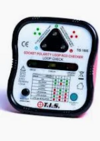I've had a look around on the forum and found a few similar questions but nothing exactly the same.
I want to move a plug from one wall to the next (10m -ish). I called in an electrician who looked at it and quoted me at £260 then lowered it to £250. While we stood there he got a bit cocky and said "It's an easy job anybody can do it so it'll only take an hour". When I hear "Anybody can do it" I like to try it myself.
A day later I called another electrician who didn't come out but gave me a similar quote. He knows us from another job we had done and knows I'm a carer for a relative and that we don't have much money and said "To be honest you could do it yourself if you're semi competent at basic electricals. It's just like extending a lamp wire but a bit more complicated. You just take off the double socket, get a junction box. Wire the old sockets wires into a junction box, hide it behind a blank box, wire a 10m cable into the other end of the junction box, have the wire come out of the blank box, run it along the wall (or under the floorboards) to the new location and fit a new double socket".
Is this true? I believe I could do that. I have extended cables before (Lamps), replaced plug sockets etc. So.. is it really that easy or was he/I making it sound easier than it actually is.
Additional:
The current wall socket has two sets of cables going into the socket (Two live, two earth, two neutral). The socket works correctly and has had multiple checks.
If it's not as easy as above I think I'd just stick two 10m gangways in and have done
I want to move a plug from one wall to the next (10m -ish). I called in an electrician who looked at it and quoted me at £260 then lowered it to £250. While we stood there he got a bit cocky and said "It's an easy job anybody can do it so it'll only take an hour". When I hear "Anybody can do it" I like to try it myself.
A day later I called another electrician who didn't come out but gave me a similar quote. He knows us from another job we had done and knows I'm a carer for a relative and that we don't have much money and said "To be honest you could do it yourself if you're semi competent at basic electricals. It's just like extending a lamp wire but a bit more complicated. You just take off the double socket, get a junction box. Wire the old sockets wires into a junction box, hide it behind a blank box, wire a 10m cable into the other end of the junction box, have the wire come out of the blank box, run it along the wall (or under the floorboards) to the new location and fit a new double socket".
Is this true? I believe I could do that. I have extended cables before (Lamps), replaced plug sockets etc. So.. is it really that easy or was he/I making it sound easier than it actually is.
Additional:
The current wall socket has two sets of cables going into the socket (Two live, two earth, two neutral). The socket works correctly and has had multiple checks.
If it's not as easy as above I think I'd just stick two 10m gangways in and have done



